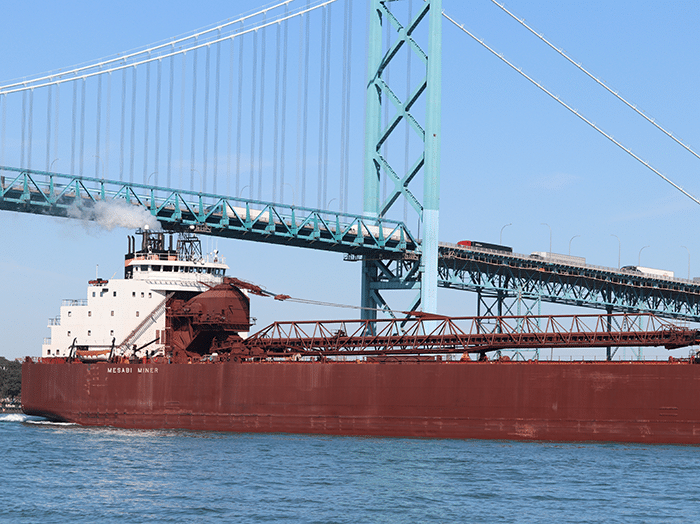
Detroit/Wayne County Port Authority initiates decarbonization project
Written by
Credit: Shutterstock
By Dr. Robert Moorcroft, Carbon Reduction Scientist, Tunley Engineering
The Detroit/Wayne County Port Authority in Michigan has initiated a 12-month project to reach net zero carbon emissions for port activities by 2040, as well as improving air quality.
The carbon consultancy is led by UK-based Tunley Engineering. Southwest Detroit Environmental Vision (SDEV) led the community engagement. The project will initially calculate baseline measurements of port activities with respect to greenhouse gas emissions, and other harmful emissions, such as PM2.5. Port activities include shipping, loading/unloading, indirect energy (electricity) and drayage. Industrial processes will be excluded from the project.
Tunley Engineering says that by working alongside the terminal operators, opportunities to decarbonize, by electrification of equipment for example, will be explored. Various options will be discussed with terminal operators, considering capital, and running costs, practicability, and availability. Several grants are available to assist with capital expenditure. Alongside carbon reduction plans for each terminal, a document for the whole port will consider shared infrastructure requirements, for example, options for the generation of renewable electricity.
Grants and Carbon Reduction Opportunities
The Inflation Reduction Act has paved the way for businesses to access funding for clean infrastructure. Furthermore, the Bipartisan Infrastructure Law has enabled $80 million of funding every year for the reduction of truck emissions at port facilities. Many of the terminals along the Detroit and Rouge rivers qualify for this funding.
Various opportunities exist to reduce carbon emissions. Hydrotreated vegetable oils burn cleaner than regular low sulfur diesel, and in many cases can be used as a like for like replacement, without the need to change assets. Electric equipment has lower operating costs than diesel equipment, and with grants available to assist with capital expenditure, agile companies which make the switch are likely to be at a competitive advantage. Furthermore, both B2B and customer demand for low carbon products is at the highest it has ever been alongside pressure from investors, government entities and other stakeholders for low carbon supply chains.
Community Engagement
Southwest Detroit has suffered poor air quality from proximity to heavy industry. Previously, the voices of the community have been overlooked in infrastructure projects, for example when homes were demolished to build I-75. Therefore, the port authority has engaged Southwest Detroit Environmental Vision to listen to the community and provide ongoing feedback for carbon reduction measures.
Project Finalization
At the end of the process, comprehensive analysis of baseline measurements for greenhouse gas emissions, and air quality impacts will be provided for all port terminals. Furthermore, a comprehensive carbon reduction plan to net zero by 2040, alongside improvements in air quality will be created. This plan will be publicly available as an interactive map, where anyone can click on a terminal and view current emissions and scroll projected emissions by year as the carbon reduction measures come into effect.
As a Carbon Reduction Scientist, Tunley Engineering, Robert Moorcroft applies his multidisciplinary scientific background spanning biology, chemistry and materials science to the carbon assessments and realistic reduction plans for the customers’ often complex needs. He completed his Ph.D. at the University of Manchester on microbiologically influenced corrosion, where he co-authored the publication “Gemini surfactant as multifunctional corrosion and biocorrosion inhibitors for mild steel” in Bioelectrochemistry (Pakiet et al, 2019). Prior to working at Tunley Engineering, he has carried out fundamental research on second generation biofuels, high efficiency shipping coatings and novel biosensing technologies.




